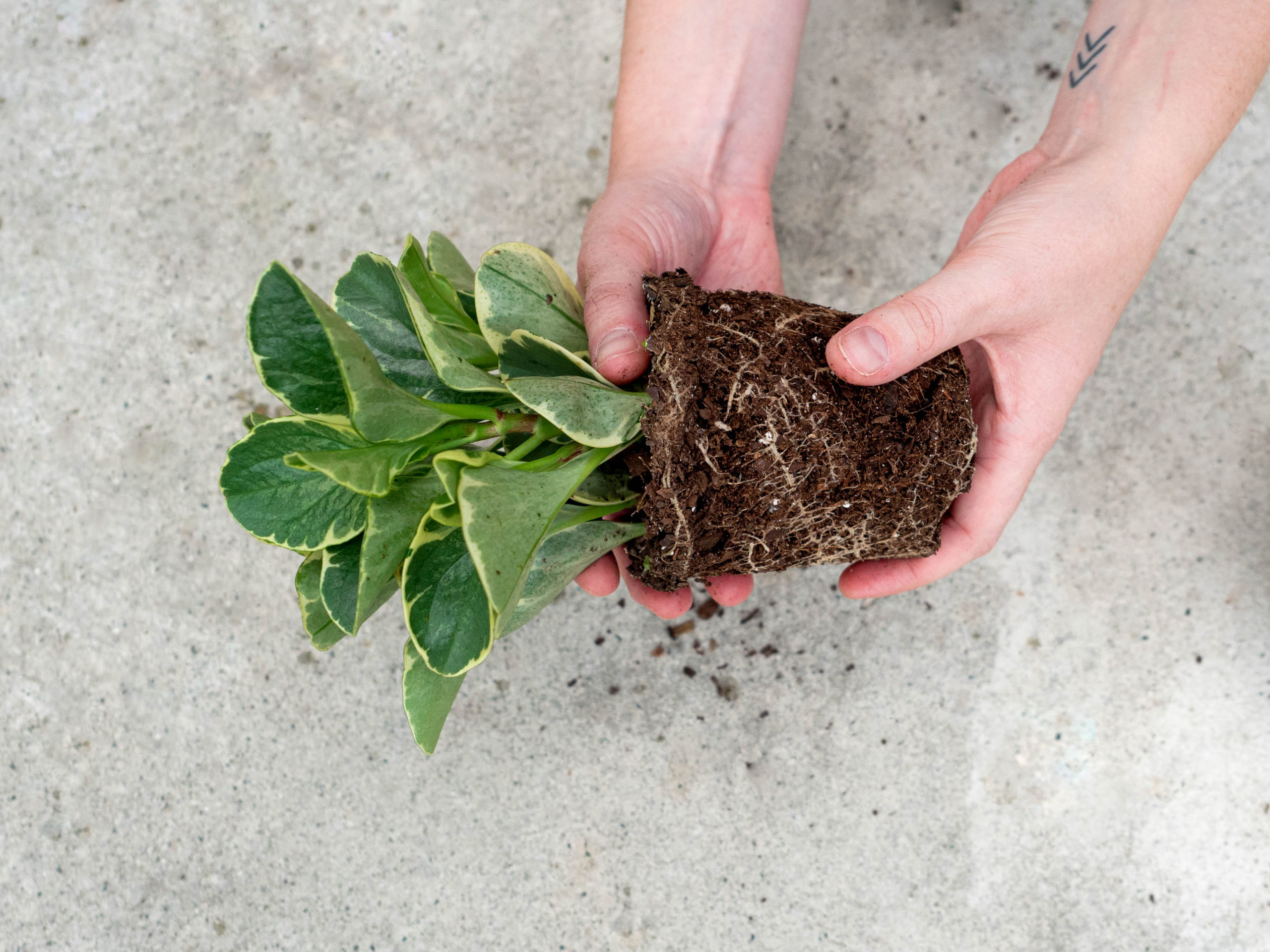If you’ve ever noticed that when watering your plant, it seems to pool on the surface of the soil instead of soaking in? Or that the soil appears hard and dense? It’s time to give your plant a little love. Compacted soil is a common issues among potted indoor plants, where small creatures found in outside dirt (bugs, worms, micro-organisms etc.) don’t usually tend to live.
Over time, the isolated soil inside your plant’s pot will become dense without the natural aeration provided by these organisms. It’s up to us to make sure our houseplants are getting the proper levels of nutrients, water, and oxygen from the soil. First of all, it’s important to understand why soil becomes compacted, so you can take the proper steps to correct the problem.
Why plant soil becomes compacted
The soil in your plant’s pot can be compacted for various reasons. The most common include:
- Soil that is too old. Your houseplant’s soil may be free from bugs or mold, but that doesn’t mean it’s healthy for your plant. The limited amount of soil inside a pot isn’t meant to last forever—and neither are the fertilizer and aerating materials found in potting mix. Generally, fast-growing plants should have soil changed annually, while slow-growing plants like the Snake Plant can hold out for longer.
- Soil is the wrong type. It shouldn’t come as a surprise that using topsoil or dirt from the backyard is bad for your indoor plants. These types of soil are for different purposes than for providing a proper ratio of nutrients and aeration for a potted plant. Potting mix is available for many different types of houseplants and succulents to ensure the best growing environment for them.
- Soil is overwatered. Sometimes, compacted soil is the result of a plant receiving too much water too often. Top watering a plant can create hard, dense soil by flushing out needed aerating materials. With only soil left, each new watering will settle it lower and lower in the pot. Bottom watering is an effective way to relieve this issue while providing plants with a more thorough watering.
The problems associated with compacted soil
It may now be a little more obvious how compacted soil can affect your potted plants. The effect of dense soil can have a significant impact on your plant and increase the risk of it becoming unhealthy or even dying. Primarily, soil compaction can lead to a lack of water flow. If it seems like you’re watering your plants often, and yet they still look parched or yellowed, it’s because this water can’t travel properly through the soil to the roots.
Similarly, overwatering can quickly saturate your plant, and cause any pockets between clumps of soil to become filled with water. This saturated soil makes it difficult for your plant’s roots to get the oxygen they need. And with each new watering, the soil becomes heavier and more compact.
Limited nutrients are also a common effect of soil compaction. Nutrients and fertilizer found in fresh potting mix won’t last more than a few months after an initial repotting. They may be flushed out with every watering and lose potency. Or, if fertilizer is added to the top of the soil, it may not be able to travel down to the plant’s roots because the soil is too compacted.
Poor root growth is also a result of compacted soil. Plants prefer to stretch their roots as they grow, but this becomes difficult when the soil is too dense to move through. A combination of compacted and saturated soil also makes it difficult for air to dry out the soil and provide oxygen for the roots. This often results in root rot!
How to loosen compacted soil and improve soil aeration
You can help loosen dense soil with two simple techniques—and thankfully, neither take much work!
Technique 1: Use a chopstick to gently poke holes in your plant’s soil. Try to create a tunnel down to where you think the greatest number of roots live. There may be some resistance, depending on how dense the roots are, so try not to force a hole. Once you’ve created several holes in the soil, water your plant, paying attention to watering over the holes. Creating this space will help water and air get to where it needs to go!
Technique 2: Create a new combination of potting mix, aerating materials (such as peat moss, vermiculite, or perlite), and even sand, depending on the type of plants you own. This new mixture will not only have the proper nutrients from the fresh soil but the proper aeration from the added materials. Remove all the old soil from your plant, then repot it into this new soil mixture and water thoroughly! You should see a noticeable change in the color and growth of your plant.
Have you experienced problems with compacted soil? How have you combated this issue with your plants? Tell me in the comments!
XO,
Micah

